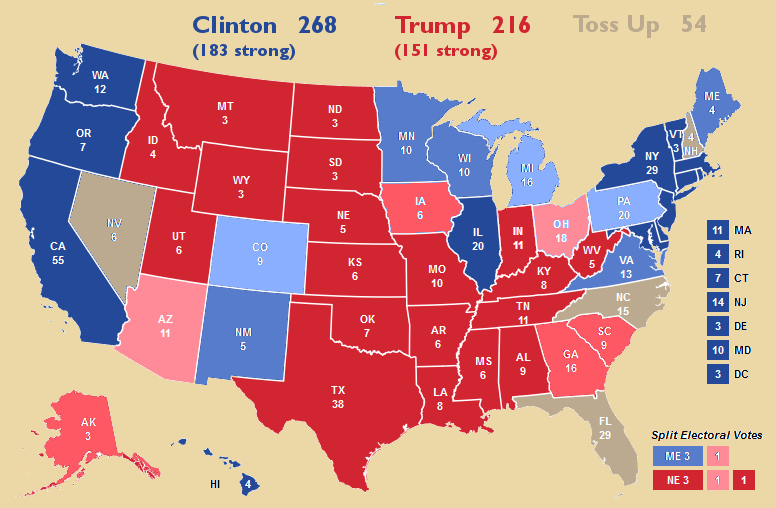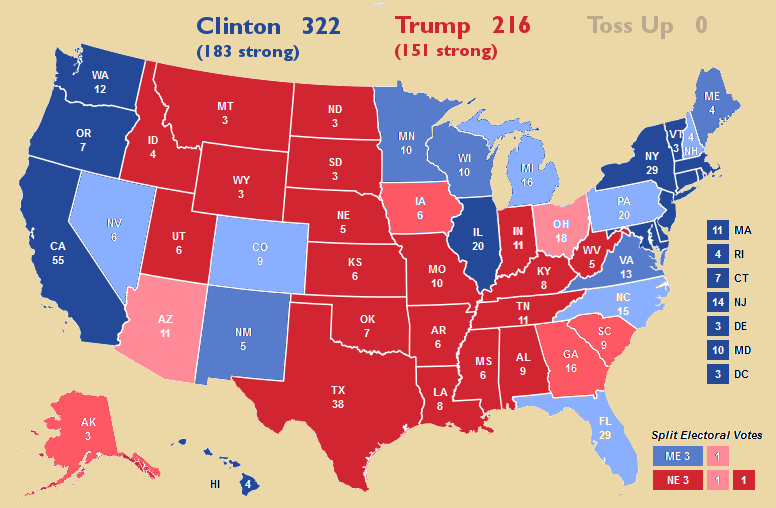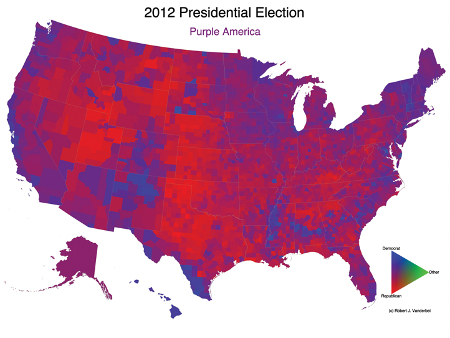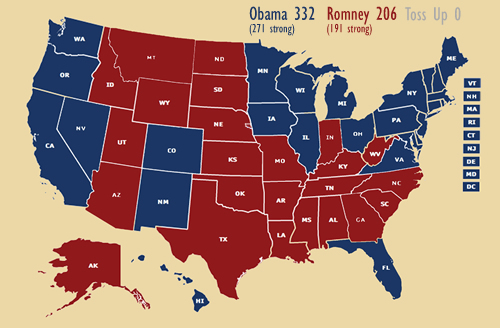This has certainly been a highly uncertain presidential election season, and more importantly, a rather depressing one.
However, I’ve posted election day predictions here for each of the last several presidential elections. And I’ve noted when my predictions were accurate (50 of 50 states in 2012, 49 of 50 in 2008). So I think it’s only fair that I do the same again this year.
Here is how I see the election as of this morning:

I tend to side with Nate Silver about this year’s presidential race: the election outcome is significantly less certain than many analysts are claiming. There are essentially two related reasons for this uncertainty:
- Because of the unusual nature of this election (two highly unpopular and polarizing candidates, including one who is especially unconventional and controversial), the polls have been consistently far more varied and volatile than in other recent presidential elections.
- For those same reasons, we have especially good reason, this time around, to suspect that our assumptions about voter turnout and demographics, used to craft and interpret polling results, may be inaccurate in ways we can’t predict (and can’t even estimate; that is, we don’t know how much we don’t know).
That latter point means that we don’t really know, for instance, the extent to which mainstream Republicans will break for Trump, cross party lines, or simply stay home. We don’t know how many Democrats (especially white, male, and working-class) may cross party lines for Trump or stay home. We don’t know how many voters have been reluctant to tell pollsters the truth about their voting plans, which may cross party and other lines, and seem risky to reveal to others. We don’t know the impact of Trump’s motivational impact on his supporters, but lack of a solid ground game to turn out the vote, on the composition of the electorate.
This is a hasty sketch of several of the most important issues in play. In any event, the electoral map above reflects this uncertainty. The impact is that, while I agree that Clinton has a distinct advantage tonight, I believe Silver is right when he suggests there is more uncertainty than many analysts will admit, such that Trump has a real chance at winning the White House, and Clinton has a real chance at a strong victory in the electoral college.
If pressed, what do I think is the most likely outcome? It’s this:

But I will be looking very, very closely at the early returns tonight, for any hints as to whether, and in what ways, our assumptions have proven wrong this time around.

 Senator Cory Booker
Senator Cory Booker 



